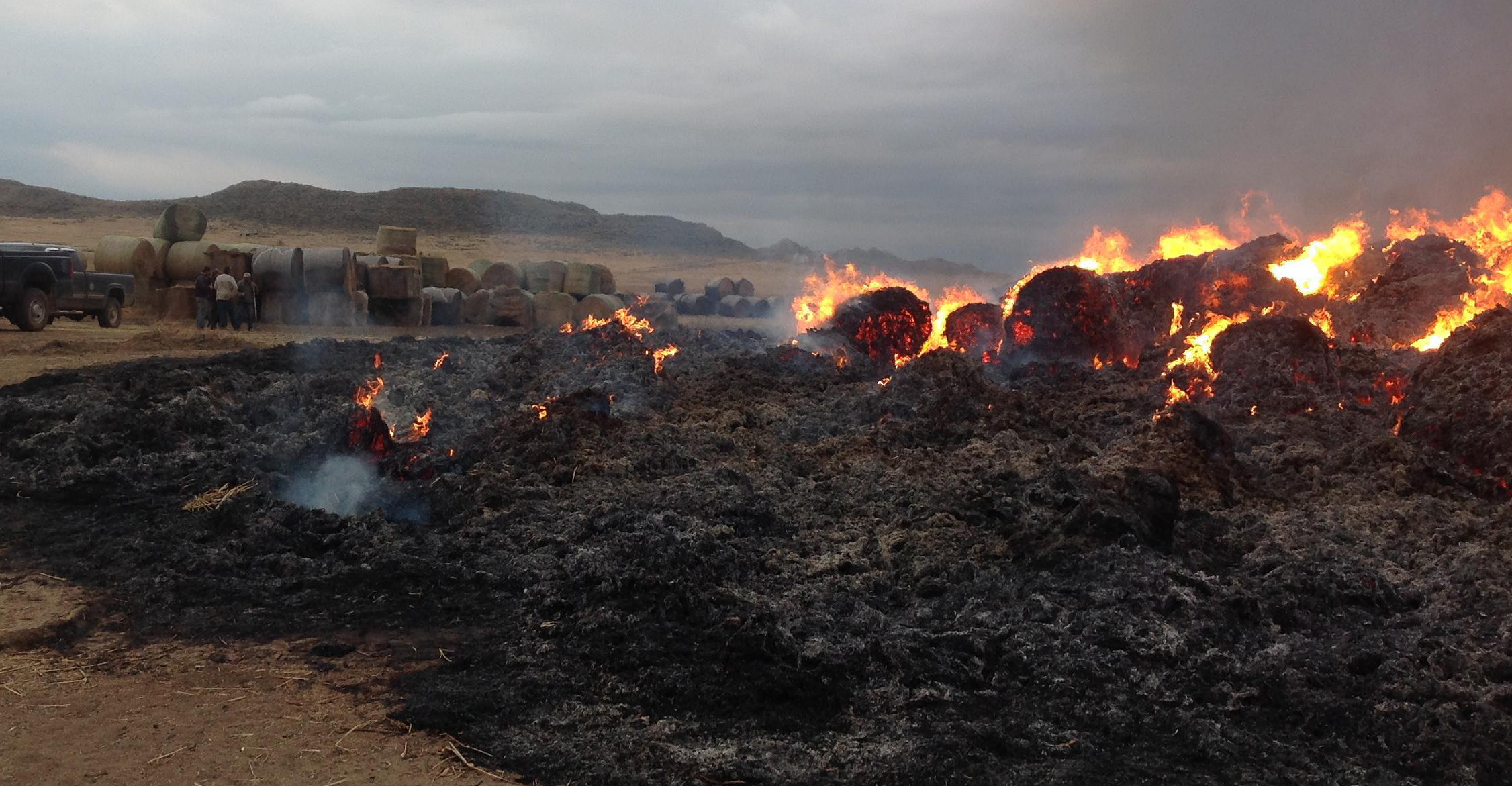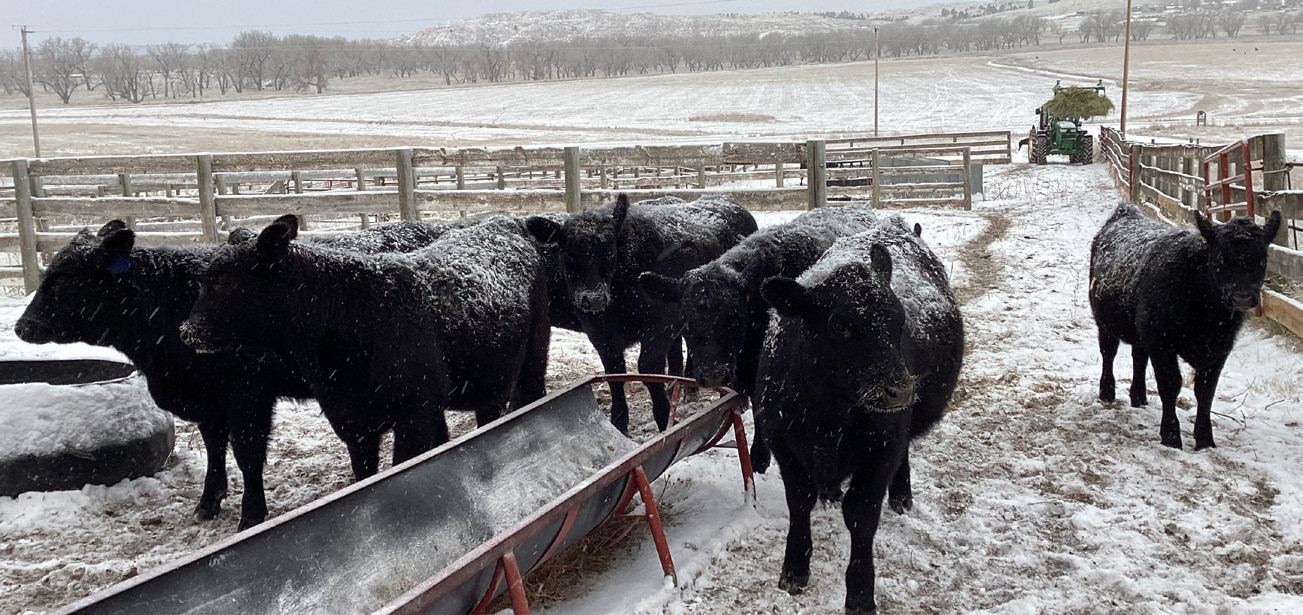Managing Risks on the Range

Ranching in Montana offers no shortage of risks. There is uncertainty in the growth processes of plants and animals. In ranching, calves may die in a blizzard, or lambs may gain weight more slowly because of a drought. What if you need to buy hay after losing your forage to wildfire? Planning for these possibilities can save money and headaches.
INSURANCE
Insurance is a major risk management strategy for agricultural producers. Fewer insurance products are available for rangeland production when compared to major commodity crops like corn and wheat. However, options are available, including the Pasture, Rangeland, and Forage (PRF) insurance program and Whole Farm Revenue Protection.
PRF is a rainfall index insurance. What does this mean? The rainfall part of the name means that PRF will not cover other losses, like disease, fire, or flood. PRF provides a payment only when rainfall dips below a certain threshold set in the policy. The index part of the title means that the coverage is not specific to your land. Instead, it is based on a grid system, in which each grid cell measures roughly 12 x 17 miles (width x height) in Montana. When buying a policy, a producer would select the grid cell or cells on which their land lies. Buying a PRF policy implies selecting specific months of coverage. You can pick the months when rainfall is most important to the operation or use another strategy. The deadline to sign up for PRF for 2024 has not yet been announced, but in recent years it has been December 1.
Whole Farm Revenue Protection insures revenue from all commodities produced on the operation, livestock included. Your revenue is determined by tax forms or related documents — your Schedule F or Substitute Schedule F forms. The deadline to sign up for Whole Farm depends on location and how taxes are filed. In Montana, the closing date for most people was March 15, unless you are late fiscal year tax filer. Whole Farm has some eligibility restrictions, including diversification requirements and revenue history.
Micro Farm is a policy similar to Whole Farm but is tailored for farms with less than $350,000 in approved revenue. Other than the smaller revenue requirement, it has fewer restrictions than Whole Farm.
Learn more about insurance options by talking to a crop insurance agent. A list of local agents is available online: public-rma.fpac.usda.gov/apps/AgentLocator/.
FARM SERVICE AGENCY PROGRAMS
The USDA Farm Service Agency (FSA) provides additional options for rangeland and forage risk management. The Non-insured Crop Disaster Assistance Program (NAP) operates much like a crop insurance program, except you don’t purchase a policy from a crop insurance agent. Instead, talk with the local FSA office to sign up. NAP can cover grazing and forage production, including native forage. NAP policy costs are capped at lower amounts relative to other types of insurance. Fee waivers and premium reductions are available for some classifications of producers, such as farmers and ranchers with 10 or fewer years of experience. NAP can also be used to cover a range of products not otherwise covered by crop insurance, like honey, nursery crops, and Christmas trees.
FSA also offers several disaster assistance programs. For example, the Livestock Forage Program provides payments to livestock producers affected by drought or fire. The Livestock Indemnity Program provides payments for higher-than-normal livestock death losses—for example, those caused by a blizzard or extreme cold. You don’t need to purchase a policy to participate in these programs but do need to file paperwork with FSA.

Photo: MSU Extension
OTHER RISK MANAGEMENT STRATEGIES
Insurance and disaster assistance are not the only ways of managing rangeland and livestock risks.
- Diversified operations that include different types of production are generally more resilient since losses to one production system may not impact another.
- Other organizations and agencies may offer assistance to help reduce production risks for your business. For example, the National Resources Conservation Service (NRCS) has a range of programs that offer both technical and financial assistance—that can help operations weather drought and other events.
- The local MSU Extension office is a useful resource for learning the types of risks
that other producers are facing in the community, as well as strategies and resources
being used to address them. They may
be able to help evaluate strategy or connect you with other resources.
Kate Binzen Fuller is an MSU Extension Agricultural Economics and Economics Specialist and an Associate Professor.
|
FOR MORE INFORMATION www.rma.usda.gov/Fact-Sheets/National-Fact-Sheets/Whole-Farm-Revenue-Protection |
